Have you ever wanted to explore the rich history and architectural marvels of a bygone era? Well, look no further than the ancient city of Sukhothai in Thailand. This UNESCO World Heritage Site is a true testament to the grandeur and creativity of the people who lived there centuries ago. In this article, we will take you on a journey through the historical wonders of Sukhothai and delve into its fascinating architecture.
Sukhothai, literally translating to “Dawn of Happiness,” was the capital of the first Kingdom of Siam in the 13th century. As you step into the ancient city, you will be transported back in time to a place where majestic temples, palaces, and statues once stood. The architectural style of Sukhothai showcases a harmonious blend of influences from various cultures, including Khmer, Mon, and Sri Lankan. The attention to detail and intricate craftsmanship of these structures is truly awe-inspiring.
One of the highlights of Sukhothai is the Wat Mahathat, the largest and most important temple in the ancient city. Its iconic central pagoda, surrounded by smaller stupas, is a sight to behold. As you explore the temple complex, you will discover intricate Buddha statues, ancient stone inscriptions, and beautiful lotus ponds. The tranquility and sense of spirituality at Wat Mahathat are truly captivating.
But Sukhothai is not just about temples. The city’s Royal Palace also deserves a visit. Although much of it has been reduced to ruins, you can still get a sense of its former grandeur and importance. Imagine walking through the halls and courtyards where kings once held court and made important decisions. The palace complex also houses several small temples and shrines, each with its own unique architectural features.
In this article, we have only scratched the surface of the architectural marvels that await you in Sukhothai. From the intricate carvings of temple walls to the imposing statues that guard the ancient city, every corner has a story to tell. So pack your bags, put on your explorer’s hat, and get ready to embark on a journey through history in the wondrous world of Sukhothai. You won’t be disappointed.
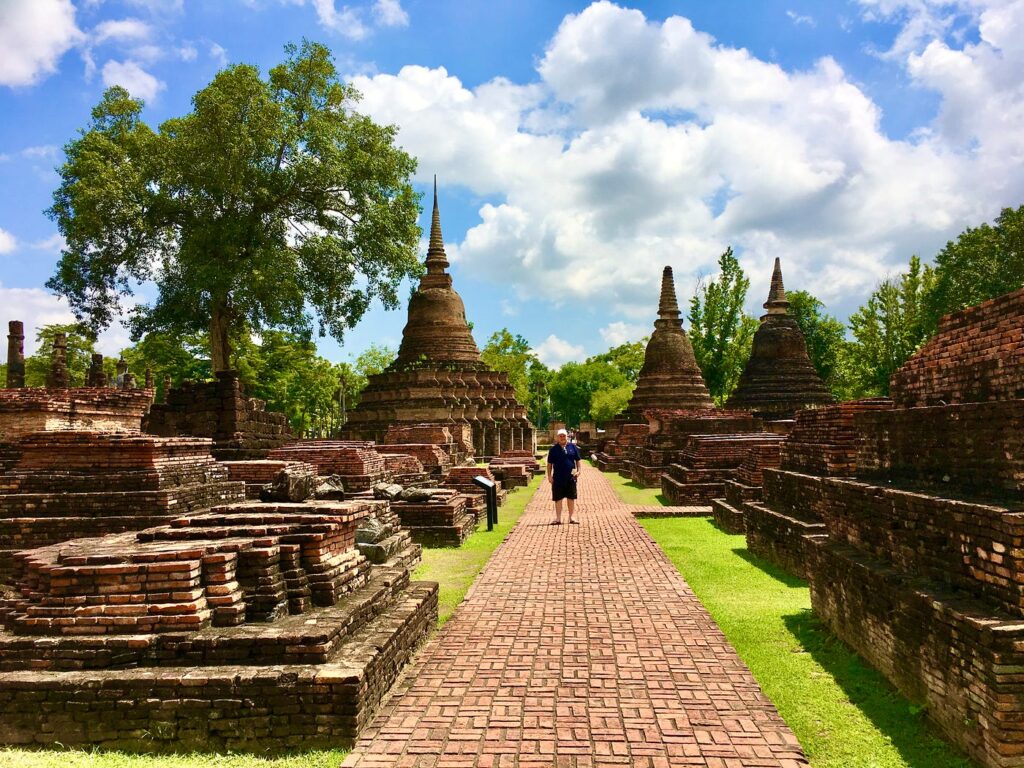
Sukhothai: A Historical Overview
Sukhothai, located in northern Thailand, was once the capital of the kingdom of Sukhothai, which existed from the 13th to the 15th century. This historical city is renowned for its rich cultural heritage and architectural wonders that reflect the glory of ancient Thai civilization. Exploring the architectural marvels of Sukhothai is like stepping into a time capsule, where you can witness the rise and fall of a great kingdom and marvel at the magnificent structures that stand as a testament to its past glory.
The Rise and Fall of the Sukhothai Kingdom
The Sukhothai kingdom was founded in 1238 by King Ramkhamhaeng, who is widely regarded as the kingdom’s greatest ruler. Under his reign, Sukhothai prospered and thrived, establishing itself as a powerful and influential kingdom in the region. The kingdom’s prosperity was attributed to its strategic location, abundant natural resources, and the wise leadership of King Ramkhamhaeng.
However, as the kingdom expanded its territories, it faced increasing pressure from neighboring empires, particularly the Ayutthaya kingdom. Eventually, Sukhothai fell to the Ayutthaya forces in the late 14th century, marking the end of its reign as an independent kingdom. Despite its downfall, Sukhothai remained a significant cultural and historical center, with its heritage and architectural marvels continuing to captivate visitors to this day.
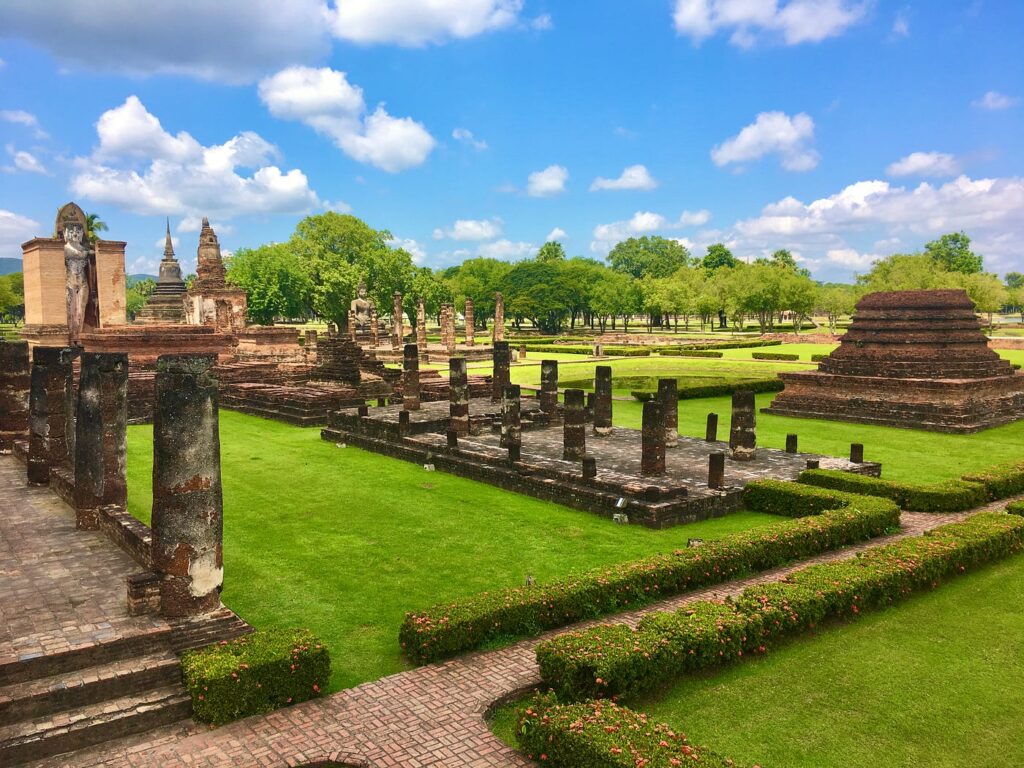
Importance of Sukhothai in Thai History
Sukhothai holds immense significance in Thai history as it is considered the birthplace of the Thai nation. It was during the reign of King Ramkhamhaeng that the Thai script was developed, laying the foundation for the modern Thai language. The kingdom’s political, social, and cultural achievements paved the way for the future development of Thailand as a nation-state.
The architectural wonders of Sukhothai provide valuable insights into the artistic and architectural traditions of ancient Thailand. The city’s unique style of architecture, known as the Sukhothai style, influenced subsequent Thai architectural and sculptural works. The legacy of Sukhothai is not only confined to its historical monuments but also lives on in Thai literature, arts, and cultural festivals.
The Architectural Wonders of Sukhothai
The Sukhothai Historical Park
The Sukhothai Historical Park is a UNESCO World Heritage Site that encompasses the remains of the ancient city of Sukhothai. Spread over an area of 70 square kilometers, the park is a treasure trove of historical and architectural wonders. It is divided into several zones, each offering a unique glimpse into the city’s past.
The Central Zone: Temples and Palace Complex
The central zone of the Sukhothai Historical Park is home to some of the most iconic temples and palace complexes in Sukhothai. Here, you will find the majestic Wat Mahathat, one of the largest and most important temples in the city. Its centerpiece is a towering Buddha statue, which stands serenely amidst the ruins, exuding a sense of tranquility.
Another prominent temple in the central zone is Wat Si Sawai, renowned for its three prangs (towers) that showcase the Khmer architectural influence prevalent during that era. These towering structures are a sight to behold, with intricate carvings and decorative motifs adorning their exteriors.
The Royal Palace, located within the central zone, was once the residence of the Sukhothai kings. Although mostly in ruins, the remnants of the palace complex offer a glimpse into the grandeur and opulence of the Sukhothai court.
Wat Sorasak, a smaller temple within the central zone, is often overlooked by visitors but is well worth a visit. This temple houses a reclining Buddha statue, whose serene expression and intricate details are a testament to the skill and craftsmanship of the Sukhothai artisans.
The Northern Zone: Buddhist Monasteries
The northern zone of the Sukhothai Historical Park is characterized by its Buddhist monasteries, which played a vital role in the religious and cultural life of the Sukhothai kingdom.
One of the most significant monasteries in the northern zone is Wat Phra Pai Luang, known for its large standing Buddha statue that towers over visitors. The statue, believed to be one of the largest in Sukhothai, exudes a sense of tranquility and serves as a focal point for meditation and worship.
Another notable monastery in the northern zone is Wat Sa Si, which is situated on an island surrounded by a picturesque lotus pond. The serene surroundings and the peaceful atmosphere make it the perfect place for quiet contemplation and reflection.
Wat Chang Lom, with its elephant-shaped buttresses surrounding the prang, is also a must-visit in the northern zone. This unique architectural feature is a hallmark of Sukhothai style and reflects the reverence for elephants in Thai culture.
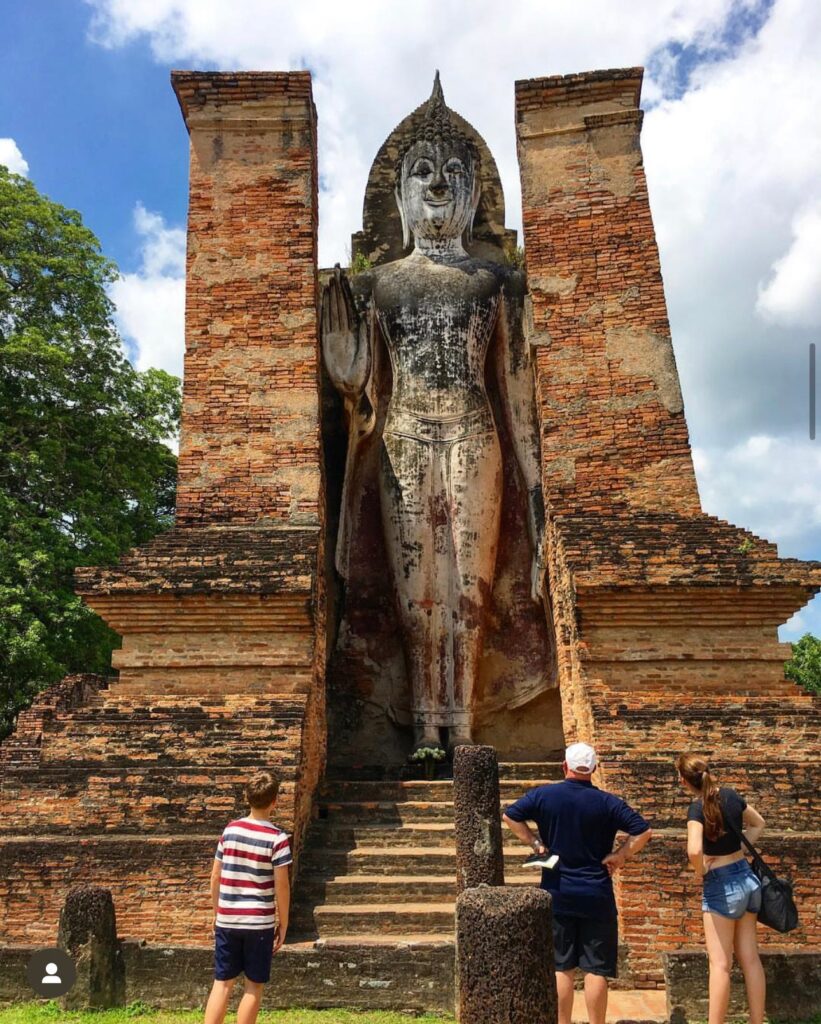
The Western Zone: Lesser-Known Ruins
The western zone of the Sukhothai Historical Park is often overlooked by visitors but boasts several lesser-known ruins that are worth exploring. This area offers a quieter and more secluded experience compared to the more popular central and northern zones.
Wat Chetuphon, located in the western zone, is a hidden gem that showcases the intricate details and delicate carvings characteristic of Sukhothai architecture. The tranquil surroundings provide the perfect backdrop for introspection and reflection.
Wat Khao Phanom Phloeng, situated on a hilltop, offers panoramic views of the surrounding landscape and provides a unique perspective of Sukhothai. The climb to the temple is rewarded with stunning vistas and a serene ambiance, making it a memorable experience for visitors.
Wat Saphan Hin, another hidden gem in the western zone, is known for its towering prang and the stone staircase that leads up to it. The climb to the top is not only physically challenging but also spiritually fulfilling, as it represents a journey towards enlightenment.
Wat Chana Songkhram, located near the Sukhothai Historical Park, is a lesser-known temple that offers a tranquil escape from the crowds. The temple’s peaceful atmosphere and well-preserved architectural details make it a favorite spot for locals seeking solace and spiritual fulfillment.
The Artistic Legacy of Sukhothai
The artistic legacy of Sukhothai extends beyond its architectural wonders and encompasses the realm of sculpture and art. Sukhothai is renowned for its unique style of Buddha images, known as Sukhothai style Buddha images, which are characterized by their graceful and serene expressions. These iconic sculptures reflect the artistic achievements of the Sukhothai period and continue to inspire awe and admiration.
The architectural and sculptural traditions of Sukhothai have had a significant influence on subsequent Thai art and architecture. Many of the architectural and artistic elements seen in Sukhothai can be observed in later Thai temples and palaces, showcasing the enduring legacy of this ancient kingdom.
The artistic achievements of Sukhothai paved the way for the development of the Sukhothai School of Art, which emerged during the Ayutthaya period. The Sukhothai School of Art incorporated the distinctive style and techniques observed in Sukhothai art and continued to flourish throughout Thai history.
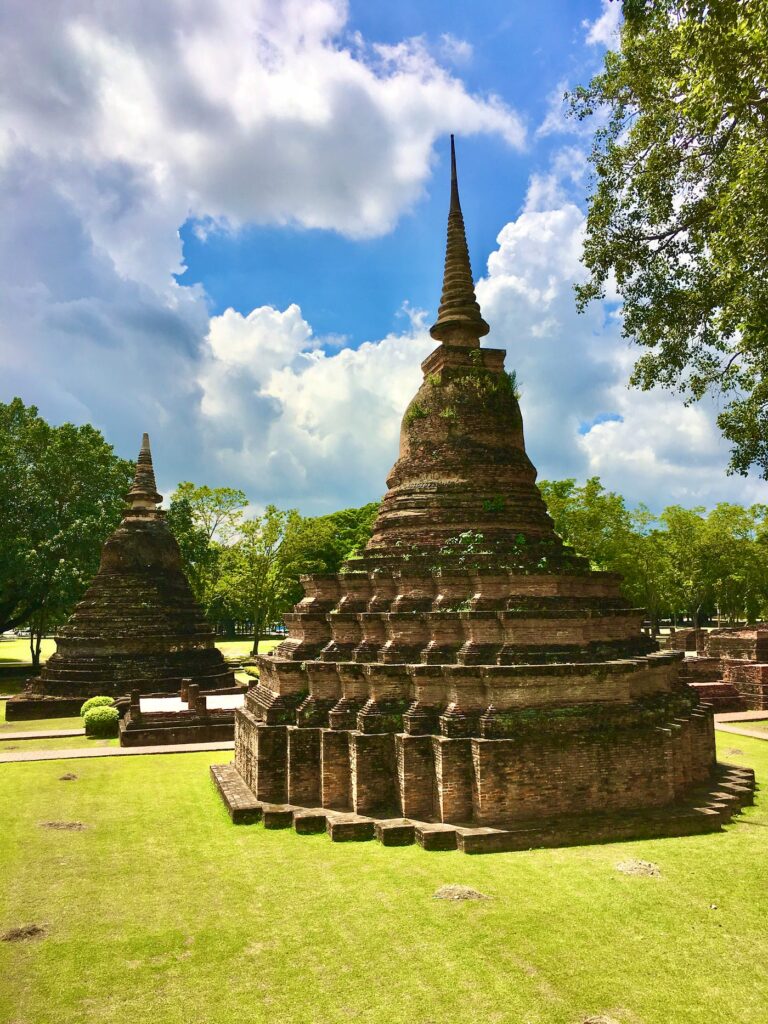
Exploring Sukhothai on Foot: A Feast for the Senses
Exploring Sukhothai on foot is the best way to appreciate the architectural marvels and immerse yourself in the city’s rich history and culture. As you wander through the Sukhothai Historical Park, you will be greeted by a myriad of sights, sounds, and scents that transport you back in time.
Immersing in the historical ambiance of Sukhothai allows you to truly appreciate the significance of this ancient city. The ancient ruins and temples exude an aura of mystique and grandeur, transporting you to a bygone era where kings ruled and monks sought spiritual enlightenment.
Admiring the intricate architectural details of Sukhothai’s temples is a feast for the eyes. The delicate carvings, ornate decorations, and exquisite craftsmanship tell stories of devotion, spirituality, and artistic excellence. Each temple has its unique features and history, inviting you to marvel at its beauty and unravel the mysteries that lie within.
Discovering hidden gems amidst the ruins of Sukhothai adds an element of adventure to your journey. Exploring the lesser-known temples and ruins allows you to escape the crowds and experience the serenity of Sukhothai in a more intimate setting. These hidden treasures often reveal unexpected surprises and provide a more personal connection to the rich history of the city.
Experiencing the tranquility of Sukhothai is a truly transformative experience. As you walk through the ancient ruins, surrounded by nature and historical monuments, you can’t help but feel a sense of peace and serenity. The spiritual energy of Sukhothai touches your soul and leaves a lasting impression, reminding you of the timeless beauty and significance of this historical gem.
Preserving Sukhothai’s Historical Heritage
Recognizing the importance of Sukhothai’s historical heritage, the Sukhothai Historical Park was designated a UNESCO World Heritage Site in 1991. This status emphasizes the vital role that Sukhothai plays in the world’s cultural and historical heritage and underscores the need to protect and preserve its architectural marvels for future generations.
Conservation efforts are ongoing to ensure the long-term preservation of Sukhothai’s historical sites. Restoration projects and careful maintenance are undertaken to safeguard the city’s architectural treasures, while also promoting sustainable tourism that respects the integrity and authenticity of the site.
However, preserving Sukhothai’s historical heritage is not without its challenges. The passage of time, natural disasters, and increasing tourist activity pose threats to the physical integrity of the ancient structures. Balancing the need for conservation with the demands of tourism requires a delicate approach that takes into account the site’s cultural and historical significance.
The future preservation of Sukhothai relies on the collective efforts of government agencies, local communities, and visitors. By promoting responsible tourism, raising awareness about Sukhothai’s historical value, and supporting conservation initiatives, we can ensure the continued existence of this architectural marvel for generations to come.
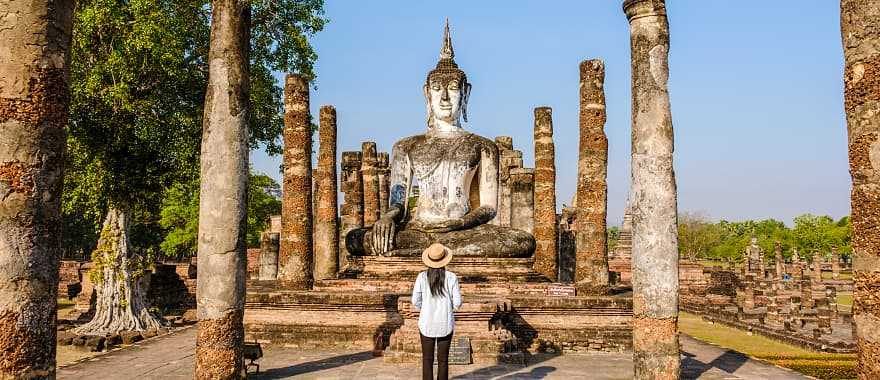
The Significance of Sukhothai in Thai Culture and Identity
Sukhothai holds deep symbolism and national pride for the Thai people. It represents a period of great cultural and political development, a time when Thailand’s identity as a nation was taking shape. The legacy of Sukhothai is ingrained in the collective consciousness of the Thai people and serves as a source of inspiration and national unity.
Sukhothai’s influence extends beyond its architectural and historical significance and has permeated Thai literature and arts. Many Thai literary works are centered around Sukhothai, depicting the kingdom’s grandeur and the heroic deeds of its kings. Artists and craftsmen draw inspiration from Sukhothai’s artistic traditions, infusing their works with elements of its unique style.
Cultural festivals and celebrations in Thailand often pay homage to Sukhothai’s rich heritage. The annual Loy Krathong festival, celebrated nationwide, originated in Sukhothai and commemorates the ancient tradition of paying respects to the water goddess. During this festival, the city comes alive with vibrant lights, floating lanterns, and traditional performances, showcasing the enduring cultural legacy of Sukhothai.
Conclusion
Sukhothai, with its architectural marvels and rich historical heritage, offers a journey through time that captivates the imagination and touches the soul. Exploring the ancient ruins, temples, and palaces allows you to unveil the riches of the past and gain a deeper understanding of Thailand’s cultural identity.
As you walk through the Sukhothai Historical Park, you will be transported to an era of majestic kings, revered monks, and skilled artisans. The beauty and grandeur of Sukhothai’s architectural wonders will leave you in awe, while the tranquility and spiritual energy of the city will provide a serene retreat from the hustle and bustle of modern life.
Sukhothai is a timeless gem that continues to inspire and enchant visitors from around the world. Its historical significance, artistic legacy, and cultural importance make it a must-visit destination for those seeking a unique and immersive journey through history. Embark on a historical pilgrimage to Sukhothai and be prepared to be amazed by its architectural marvels and the stories they have to tell.
